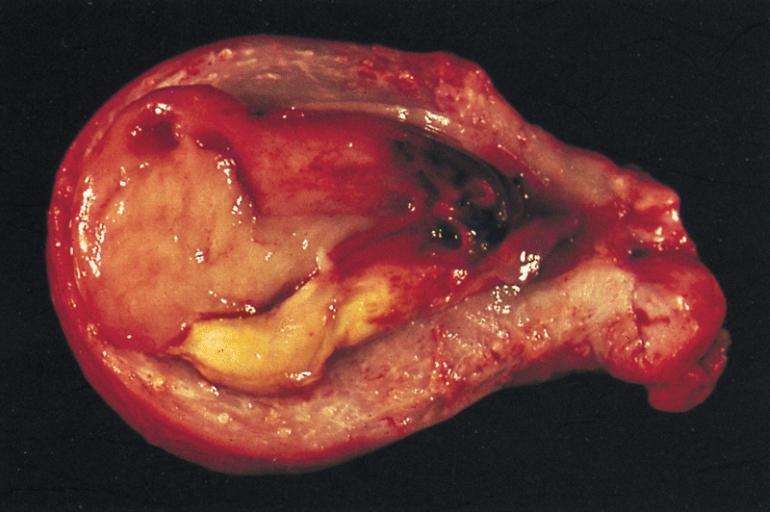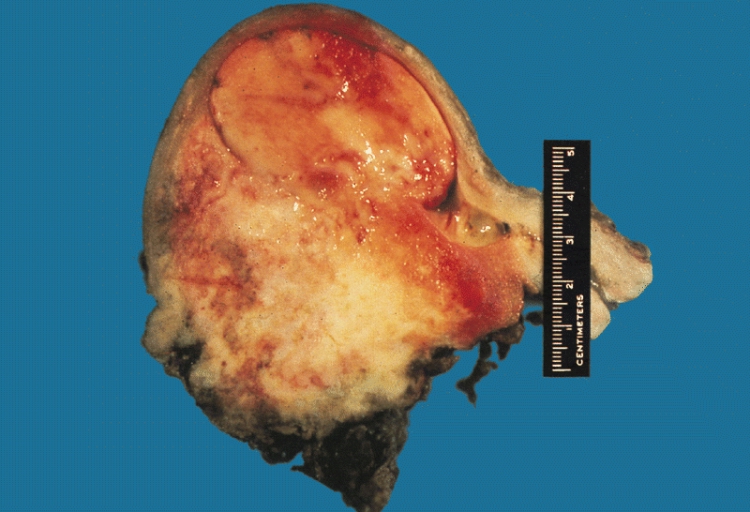Endometrial cancer classification: Difference between revisions
Jump to navigation
Jump to search
| Line 5: | Line 5: | ||
==Overview== | ==Overview== | ||
==Classification== | ==Classification== | ||
Cellular Classification of Endometrial Cancer | * Endometrial cancers are classified in one of the following two categories: | ||
:* Type 1 may arise from complex atypical hyperplasia and is pathogenetically linked to unopposed estrogenic stimulation. | |||
:* Type 2 develops from atrophic endometrium and is not linked to hormonally driven pathogenesis. | |||
'''Cellular Classification of Endometrial Cancer''' | |||
:* 1. Endometrioid (75%–80%).[The most common endometrial cancer cell type is endometrioid adenocarcinoma, which is composed of malignant glandular epithelial elements] | |||
::* Ciliated adenocarcinoma. | |||
::* Secretory adenocarcinoma. | |||
::* Papillary or villoglandular. | |||
::* Adenocarcinoma with squamous differentiation. | |||
:::* Adenoacanthoma. | |||
:::* Adenosquamous.[[Adenosquamous tumors contain malignant elements of both glandular and squamous epithelium]] | |||
:* 2. Uterine papillary serous (<10%). | |||
:* 3. Mucinous (1%). | |||
:* 4. Clear cell (4%). | |||
:* 5. Squamous cell (<1%). | |||
:* 6. Mixed (10%). | |||
:* 7. Undifferentiated | |||
<gallery> | |||
Image:Endometrial stromal sarcoma gross.jpg|Endometrial stromal sarcoma | Image:Endometrial stromal sarcoma gross.jpg|Endometrial stromal sarcoma | ||
Image:Uterine carcinosarcoma.jpg|Malignant mixed müllerian tumor | Image:Uterine carcinosarcoma.jpg|Malignant mixed müllerian tumor | ||
Revision as of 15:20, 1 September 2015
|
Endometrial cancer Microchapters |
|
Diagnosis |
|---|
|
Treatment |
|
Case Studies |
|
Endometrial cancer classification On the Web |
|
American Roentgen Ray Society Images of Endometrial cancer classification |
|
Risk calculators and risk factors for Endometrial cancer classification |
Editor-In-Chief: C. Michael Gibson, M.S., M.D. [1]
Overview
Classification
- Endometrial cancers are classified in one of the following two categories:
- Type 1 may arise from complex atypical hyperplasia and is pathogenetically linked to unopposed estrogenic stimulation.
- Type 2 develops from atrophic endometrium and is not linked to hormonally driven pathogenesis.
Cellular Classification of Endometrial Cancer
- 1. Endometrioid (75%–80%).[The most common endometrial cancer cell type is endometrioid adenocarcinoma, which is composed of malignant glandular epithelial elements]
- Ciliated adenocarcinoma.
- Secretory adenocarcinoma.
- Papillary or villoglandular.
- Adenocarcinoma with squamous differentiation.
- Adenoacanthoma.
- Adenosquamous.Adenosquamous tumors contain malignant elements of both glandular and squamous epithelium
- 2. Uterine papillary serous (<10%).
- 3. Mucinous (1%).
- 4. Clear cell (4%).
- 5. Squamous cell (<1%).
- 6. Mixed (10%).
- 7. Undifferentiated
-
Endometrial stromal sarcoma
-
Malignant mixed müllerian tumor

